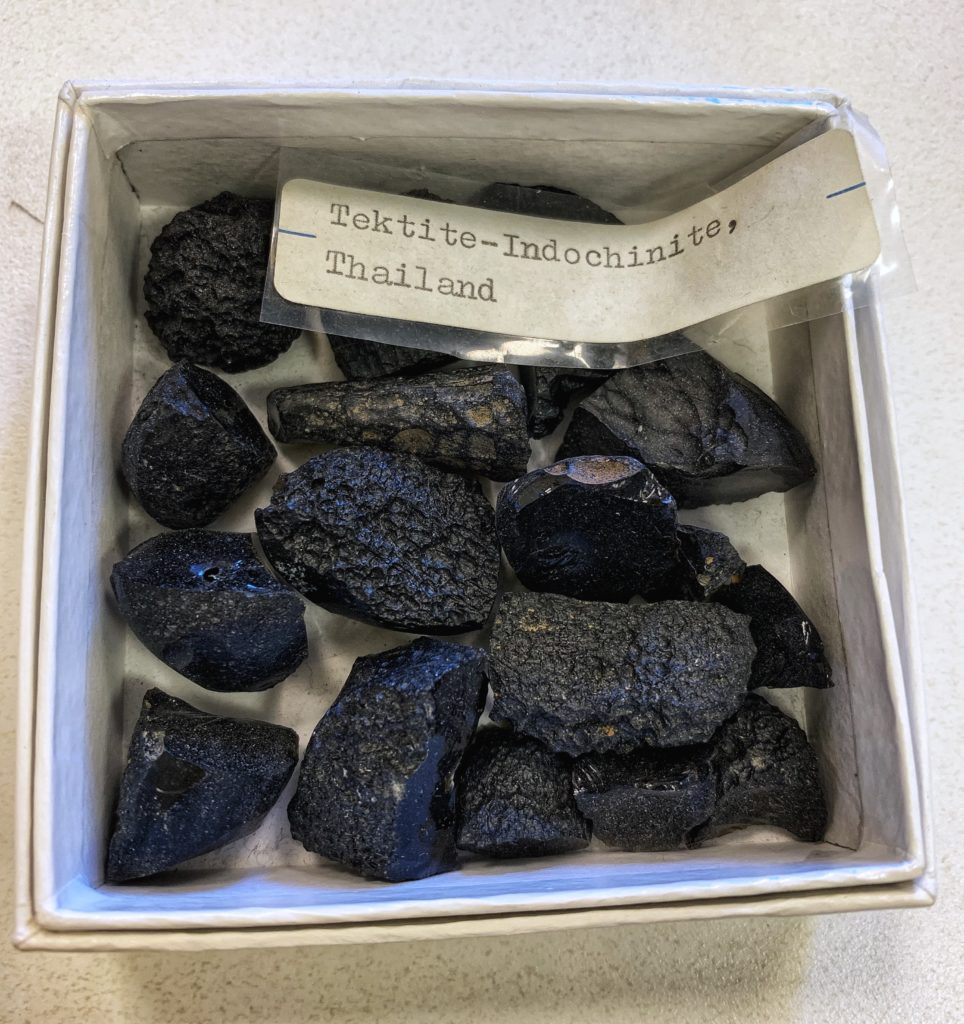Impact events are relatively common. The objects known as shooting stars are actually small meteors burning up as they pass through Earth’s atmosphere. If a meteor is large enough, some part of it may reach Earth as a meteorite. These small impacts don’t form big craters, even if they might be large enough to devastate urban areas.
In its long history, Earth has experienced several meteor-impact events large enough to melt terrestrial rock and send it flying for hundreds or even thousands of miles. Following these impact events, the melted rock cooled to form materials known as tektites, which can now be found in several large areas, or “strewn fields,” around the world.
Understanding the impact process for tektite-forming events on Earth can lead to insights into the giant impact event that is believed to have formed the moon billions of years ago. That’s one result of new research from Washington University in St. Louis focusing on volatile elements, “Implications of K, Cu, and Zn isotopes for the formation of tektites.” The research was published Aug. 15 in the journal Geochimica et Cosmochimica Acta.
“We’re comparing tektites with the source of tektites, which is the upper continental crust, to see what changed during the impact,” said co-author Kun Wang, assistant professor of earth and planetary sciences in Arts & Sciences.
By establishing the expected pattern for volatile losses during impact events, Wang and his fellow researchers will be able to work backward from the products of impact events —tektites and lunar rocks alike — to learn about pre-impact conditions.
scraped from https://www.newswise.com/articles/tektites-don-t-come-from-the-moon-but-might-help-scientists-understand-how-it-formed


